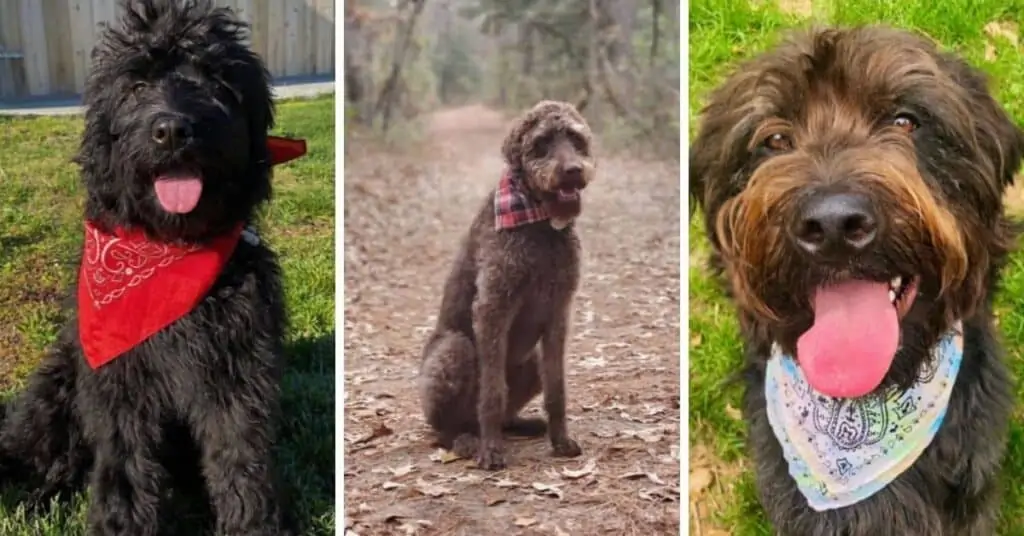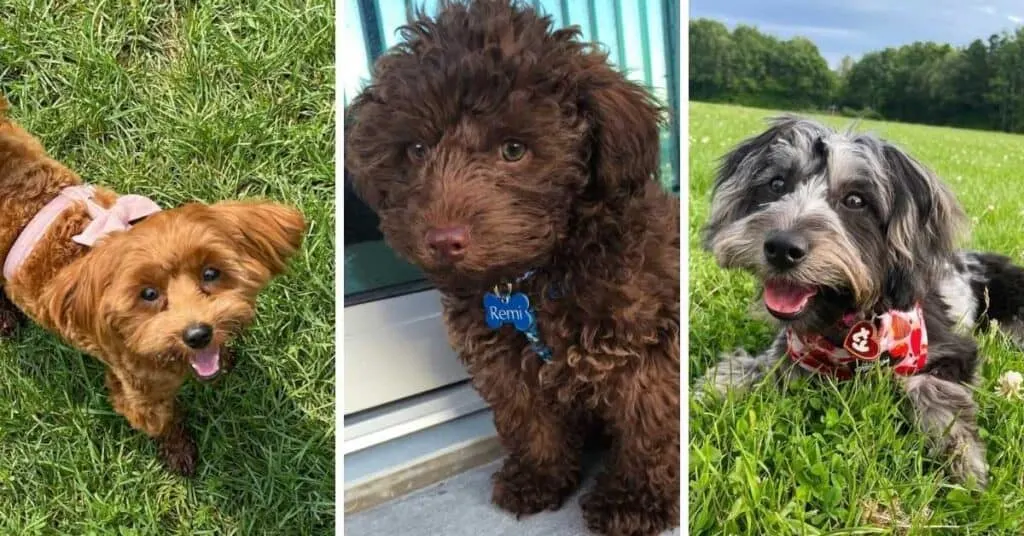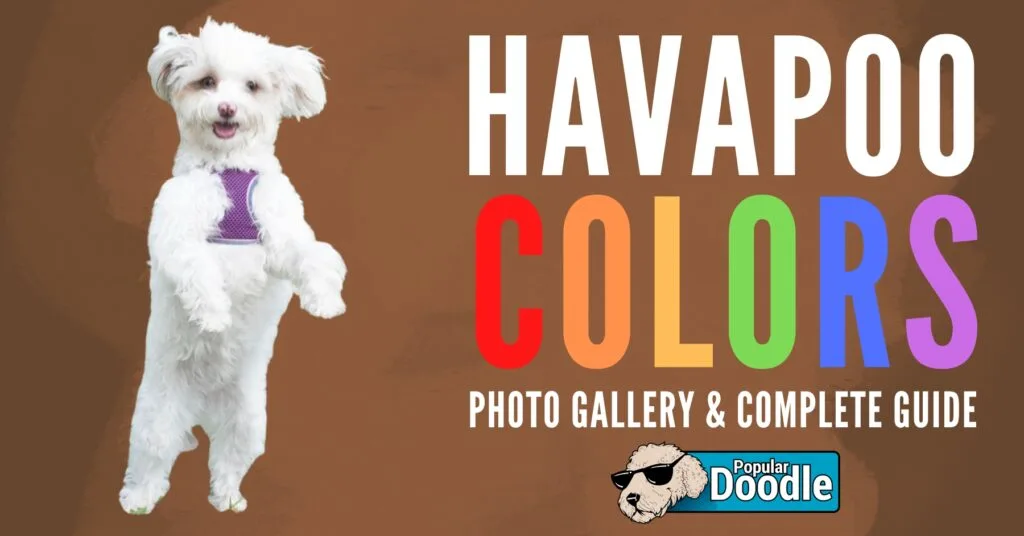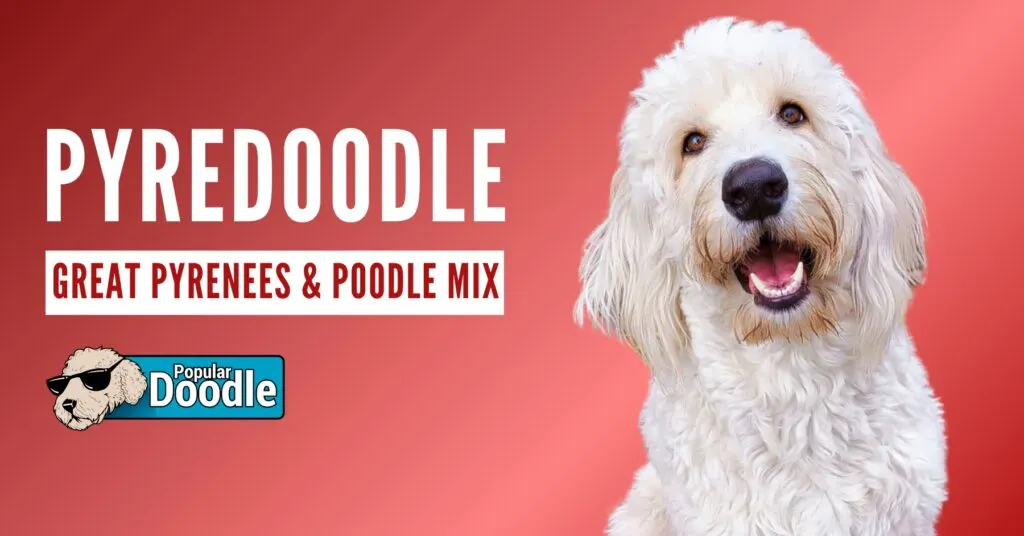
As the result of pairing two hypoallergenic parent breeds, the Whoodle’s coat is as non-shedding and allergy-friendly as it gets. The Whoodle’s coat isn’t just practical, it’s beautiful too! It has the potential to be a variety of amazing colors and patterns!
Some of the most common Whoodle colors include black, brown, wheaten, apricot, and gray. In addition, a Whoodle’s coat is often a combination of two or more of these colors!
Keep reading as we’ll discuss a wide range of Whoodle colors both common and rare…
What Colors Do Whoodles Come In?
Whoodles can come in a range of colors, with second generation, F2 Whoodles displaying a greater variation than first-generation, F1 Whoodles.
What color a Whoodle will be is based on the genetics passed on from both the Poodle and the Soft-Coated Wheaten Terrier parent breeds.
There are over 20 recognized Poodle coat colors and patterns, although the American Kennel Club (AKC) only endorses 11 colors.
On the other hand, the Soft-Coated Wheaten Terrier only comes in one official color, although the hues vary from light gold to a deeply tinted warm honey color. While the body should be a shade of wheaten, a blue-grey color is permitted around the muzzle, eyes, and ears.
Since Soft-Coated Wheaten Terriers don’t vary much in coloring, many Whoodles will inherit this appearance as well. However, thanks to the Poodle DNA in this breed, there are a large assortment of possible colors, particularly in multi-generational Whoodles.
Do Whoodles Change Color Over Time?
Depending on the percentage of Soft-Coated Wheaten Terrier DNA in the puppy and the genes passed onto the puppy by its parents, your Whoodle may change color as they grow.
Colors like silver and café au lait fade as the puppy matures to create the characteristic muted tones of an old-world photograph seen in many full-grown Whoodles.
Soft-Coated Wheaten Terriers are typically born a darker shade with dark black or brown tipping. As the puppy matures, their coat lightens or “clears” to achieve the wheaten tones of an adult dog.
Light-coated Whoodles with a high percentage of Soft-Coated Wheaten Terrier DNA are more likely to change color than their dark-colored counterparts.
Keep in mind that not all Whoodle puppies lighten as they age. A reputable breeder should be able to give you a good idea of what a particular puppy’s coat will look like as they grow older.
Related: How to Recognize a Responsible Doodle Breeder (and Avoid Puppy Mills!)
Solid Whoodle Colors
Black Whoodle
Black is a relatively common color, even amongst F1 Whoodles. As black is a dominant gene, a Whoodle only needs one copy of it to appear black.
An F1 black Whoodle will always have a black Poodle parent and be heterozygous (i.e., possessing only one copy of the “B” gene) for black.
Black Whoodles always have black noses and paw pads.
As we’ll talk about later in the article, both gray and silver Whoodle puppies start out looking black and fade to their adult color. “True” black Whoodles will not fade as they grow older.
If color is important to you, make sure you check with your breeders to see if a puppy you’re considering is truly black or if they’ll eventually fade.
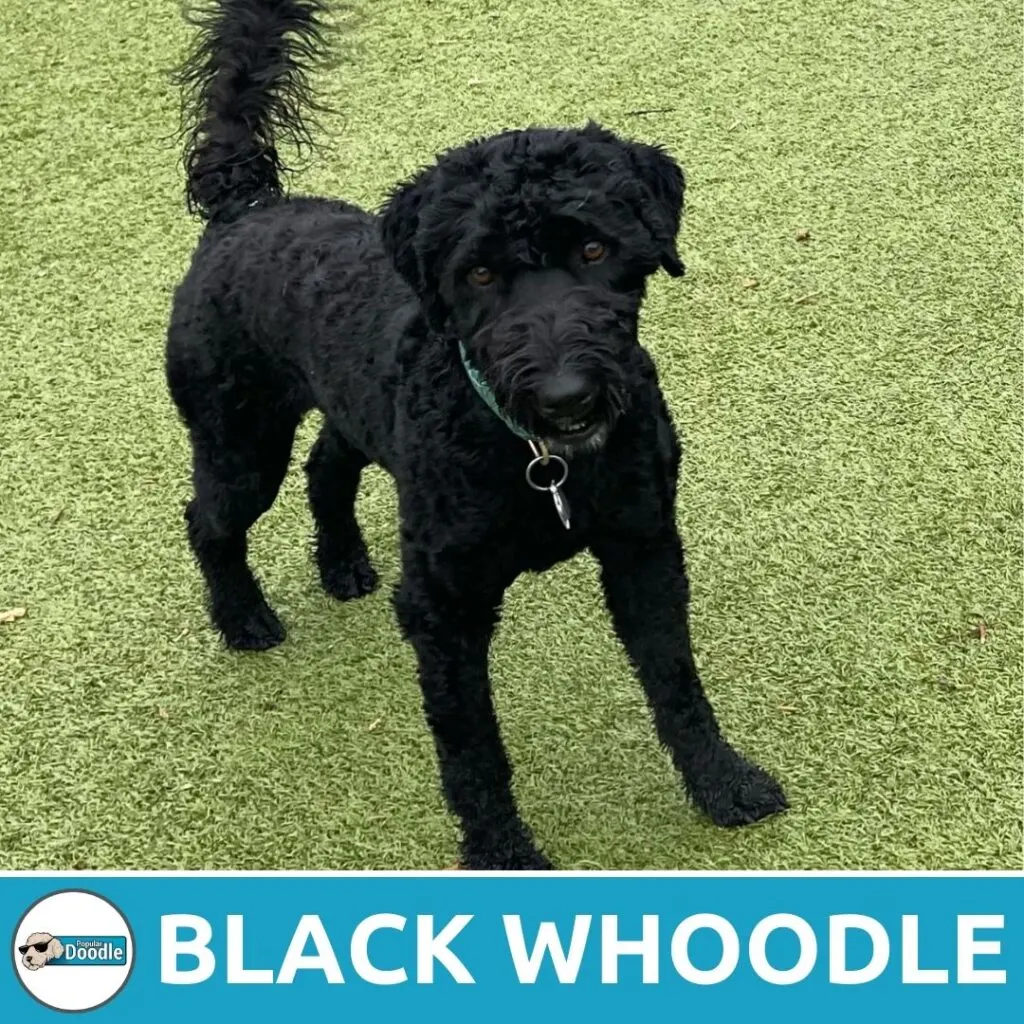
Brown Whoodle
Brown Whoodles have a distinctive rich brown coat. The shade is halfway between milk and dark chocolate. In fact, some darker brown puppies can also be referred to as chocolate Whoodles!
These puppies have dark brown noses, eyes, paw pads, and nails. While the most common eye color in brown Whoodles is a gorgeous dark brown color, some puppies are gifted with amber or topaz-colored eyes.
The rich, brown Whoodle color is found in all generations of this breed.
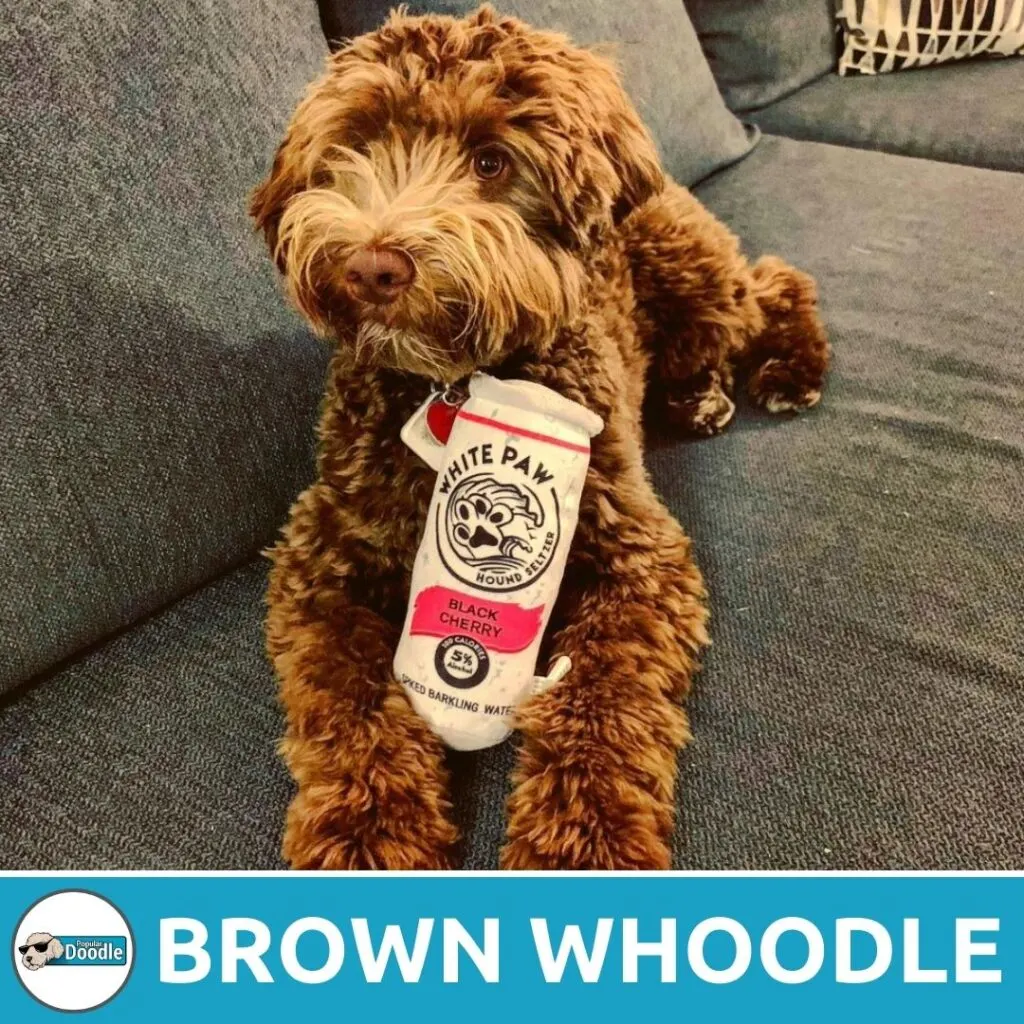
Café Au Lait Whoodle
Café au lait is a modifying gene that acts on a brown coat causing it to fade to a coffee-with-cream shade of brown. Café au lait Whoodles have liver-colored noses and amber-colored eyes.
Adult café au lait Whoodles are often mistaken for cream Whoodles. However, these two colors of dog can easily be differentiated by the color of their noses and paw pads.
Puppies are much easier to tell apart. Cream Whoodles are born a cream or honey color and café au lait Whoodles are born a darker shade of brown that clears as they age.
Café au lait Whoodles are extremely rare due to the low popularity and high inbreeding coefficient of cafe au lait Poodles.

Apricot Whoodle
Apricot is caused by a recessive gene and is more common in second generation F2 Whoodles. Apricot Whoodles have a red-tinted coat that ranges from a pale, almost cream color to rich, honey gold.
Although a “true” apricot Whoodle can only appear in a multi-generational or backcrossed Whoodle (F1B, F2, F2B, etc.) some F1 Whoodles appear to be an apricot color due to the Soft-Coated Wheaten Terrier’s influence.
Unlike many other colors that fade as the Whoodle matures, apricot is the only color that darkens. A Whoodle who had a pale, creamy appearance at birth may appear to be dipped in melted gold as an adult!
A pale apricot Whoodle can be easily distinguished from a cream Whoodle based on its underlying coat hue. An apricot Whoodle always has an underlying red tone to its coat, whereas a cream Whoodle has a butter-yellow undertone.
In addition to this, a cream Whoodle will have a black nose, whereas an apricot Whoodle can have a black or liver nose.
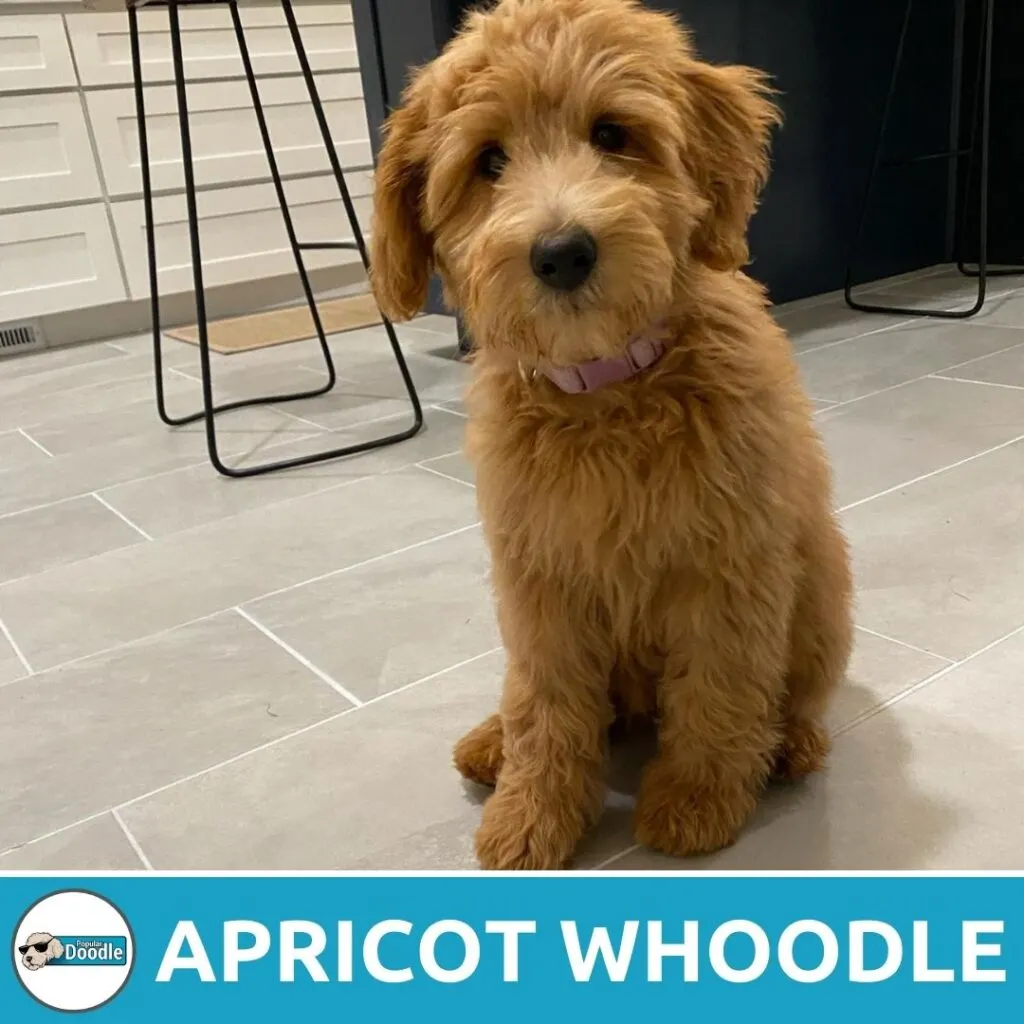
Red Whoodle
Red Whoodles are brown with deep red undertones and black or liver noses.
It is thought that the red Whoodle color is caused by the recessive rufus gene that modifies an apricot coat, turning it the distinctive red-brown of a red Poodle.
Because the red coloration is due to the presence of two recessive genes, red is more common in second generation or backcrossed Whoodles. A few examples to help demonstrate…
- An F1 Whoodle with an apricot and rufus gene mated to an F1 Whoodle with an apricot and rufus gene will have 6.25% red Whoodle puppies in every litter.
- An F1 Whoodle with an apricot and rufus gene mated to a red Poodle (homozygous for apricot and the rufus gene) will have 25% red Whoodle puppies in every litter.
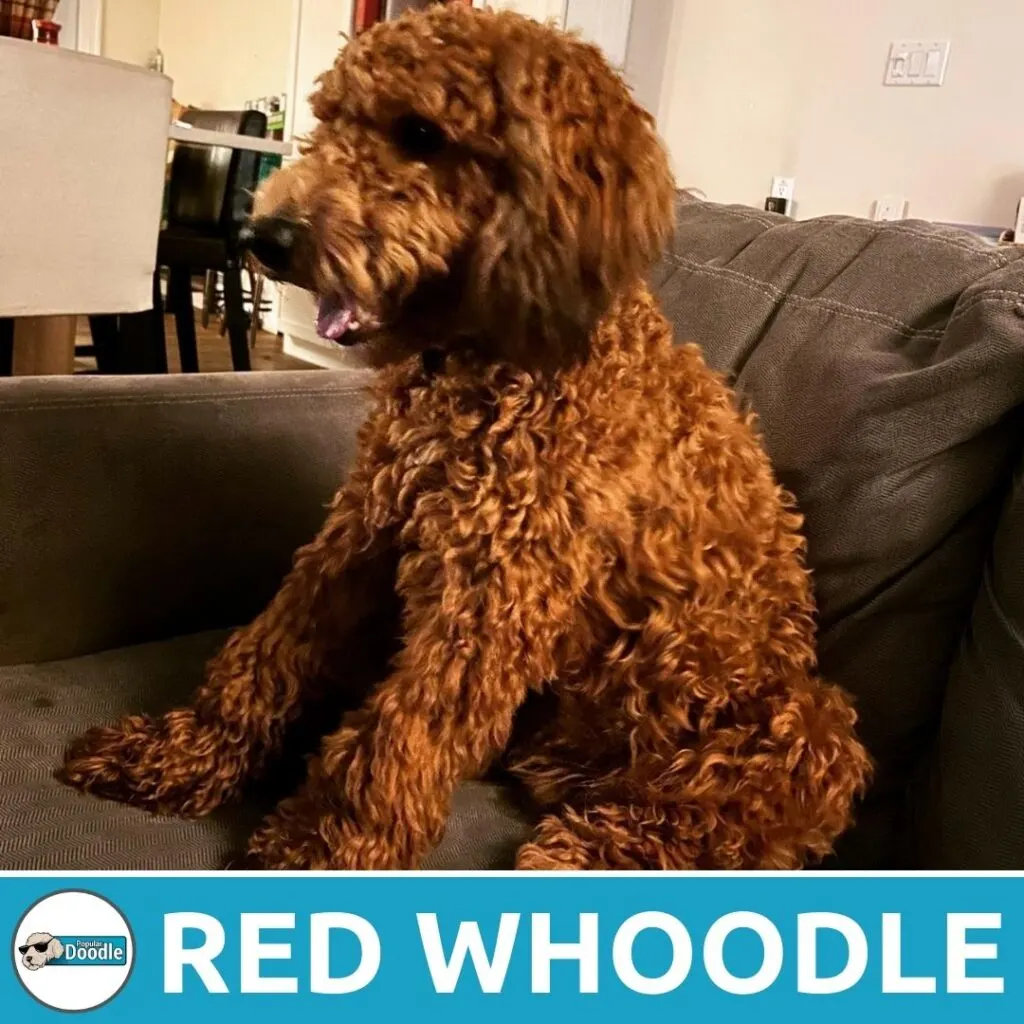
White Whoodle
White is recessive to every other gene, including apricot. As white is a disqualifying color in Soft-Coated Wheaten Terriers, it is impossible to breed a white F1 Whoodle.
Although a white F1 Whoodle is genetically impossible, an F1B or F2 white Whoodle is undoubtedly within the realm of possibility and is one of the most popular Whoodle colors!
White Whoodles should be pure white, with no mismarks—otherwise they may be a parti or abstract Whoodle like we’ll discuss later.

Cream / Wheaten Whoodle
Cream or wheaten Whoodles are among the most common Whoodle colors. The Soft-Coated Wheaten Terrier and Poodle possess similar cream and wheaten colors that complement one another.
Many cream Whoodles have the true pale cream of a cream Poodle, but a few will develop the honey gold of a darkly shaded Soft-Coated Wheaten Terrier.
Cream Whoodles are often born a much darker shade of gold and slowly lighten to a gentle cream shade as they age.
Cream Whoodles should have bright black button eyes and noses. Cream Whoodles are much easier to find than white Whoodles and do not show dirt as quickly.
For any lighter Whoodle color, I suggest investing in a MudBuster. This little contraption is a game-changer for cleaning dirty dog paws and will help keep your pup’s paws from getting stained a muddy brown or green.

Gray Whoodle
Gray Whoodles can occur in any generation of this breed. The gray gene is dominant, and thus the Whoodle only needs one copy of the gene to have this coloring.
The progressive graying gene causes premature greying of pigmented hairs, similar to how premature graying occurs in some people.
Gray Whoodles are Whoodles with a black base coat that lightens as they age. Some gray Whoodles are born a dark charcoal grey that lightens as they grow. In contrast, other gray Whoodles are born black and remain black for the first 1 to 4 years of their life before transforming from midnight black to dove gray.
All gray Whoodles should have black noses, eyes, and paw pads, although they may have a few white hairs between their paw pads and on their chests.
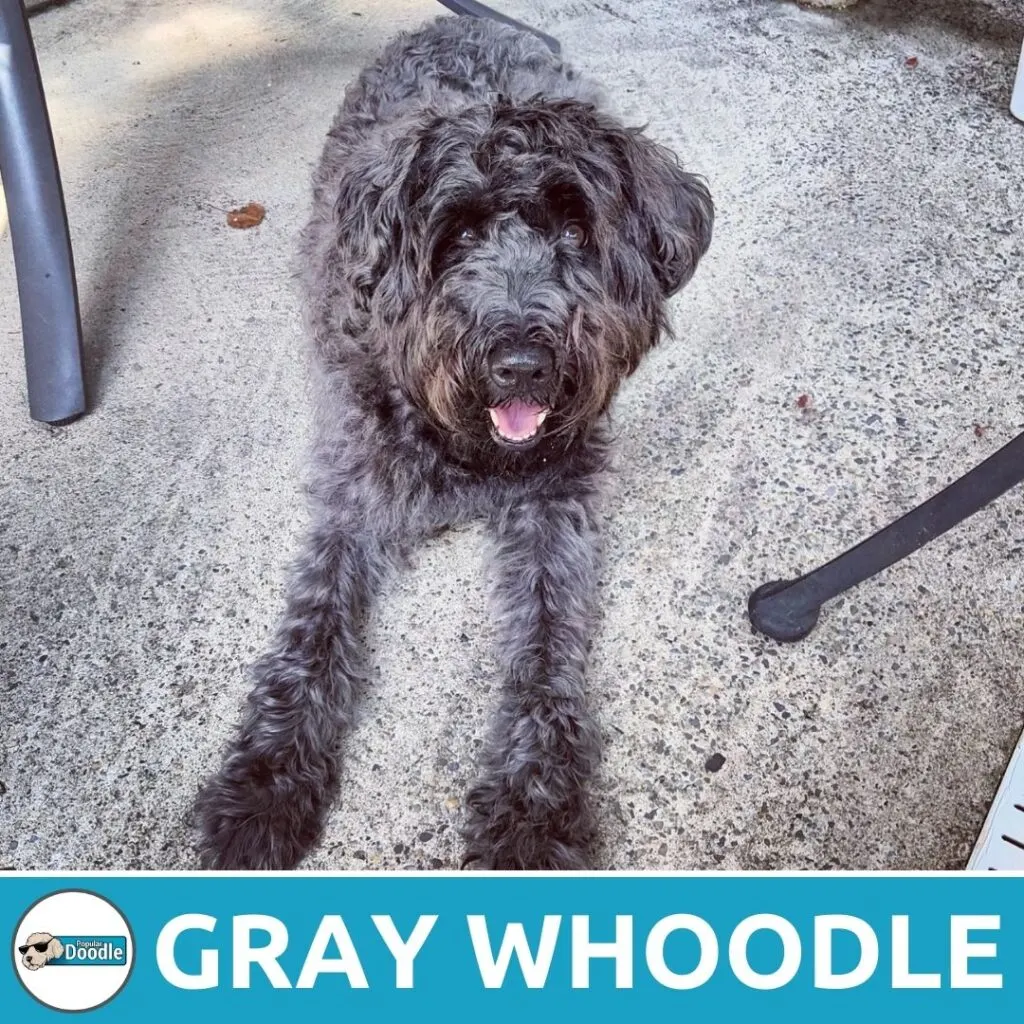
Silver Whoodle
The silver Whoodle and gray Whoodle appear very similar and can be challenging to tell apart. However, silver and gray are due to two different genes.
Where gray is caused by a dominant gene that causes premature loss of pigmentation, silver is caused by a recessive gene that fades the appearance of black or brown Whoodles.
Silver causes black Whoodles to fade to a silvery, blue-grey by two years of age and brown Whoodles to fade into a dusky, silver-tan color.
The silver gene rarely affects the Whoodle’s pads or nose coloring, although puppies often have a frosting of white or lighter hairs between their paw pads.

Bi and Tri Color Whoodle Patterns
Merle Whoodles
Merle Whoodles have a swirling pattern of colors caused by a dominant gene. Merle refers to the pattern, not the color! Breeders can breed for red, black, silver, or brown merles.
The idea of a merle Poodle is controversial! Many people question whether the merle gene occurs naturally in the Poodle population or if it is the product of crossing Poodles with other breeds containing the merle gene.
Most breeders work off the assumption that a merle Whoodle is the product of crossing three dog breeds to obtain the desired merle pattern. Regardless of the merle Whoodle’s dubious parentage, these are striking dogs that are sure to draw attention.

Phantom Whoodle
Unlike parti colored Whoodles who have dark secondary markings on a white background, phantom Whoodles are bi-colored with a lighter color being presented on a darker background.
The most common background colors in phantom Whoodles are black, brown, silver, and apricot. Phantom Whoodles have “Dobie” markings which means the lighter color is found:
- Above the eyes
- Along the front and back legs
- Under the tail
- Along the chest
- At the sides of the muzzle
Many people may question whether their Whoodle is truly a Poodle and Soft-Coated Wheaten Terrier mix, but rest assured that the phantom coloration is a naturally occurring mutation in purebred Poodles.

Brindle Whoodle
Like merle and phantom, brindle refers to the Whoodle’s coat pattern and not the color. While the most common brindle color pattern is brown and black, brindle can occur in any color combination.
Brindle produces a distinctive striping pattern that wraps around the dog from top to bottom.

Parti Whoodle
A parti Whoodle is a bi-color pattern with more than 50% white combined with some other secondary color. The secondary color can be black, brown, apricot, red, silver, or any other option. The lines between the two colors should be crisp and clean.
Many people confuse mismarked, or abstract Whoodles with parti Whoodles. While both types are characterized by their white-based, bi-color coats the percentage of white differs.
Abstract Whoodles have less than 50% white, whereas parti Whoodles have more than 50% white.

Black And White Whoodle
Black and white Whoodles aren’t a specific pattern in itself, but they are one of the most popular multi-color options for this breed.
A black and white Whoodle can be either parti or abstract depending on how much white is present in their coat. Some abstract Whoodles are called “tuxedo Whoodles” as they resemble the pattern of formal attire.
The coloring is similar to the patterning of an orca or panda, except without the white eye-rings.
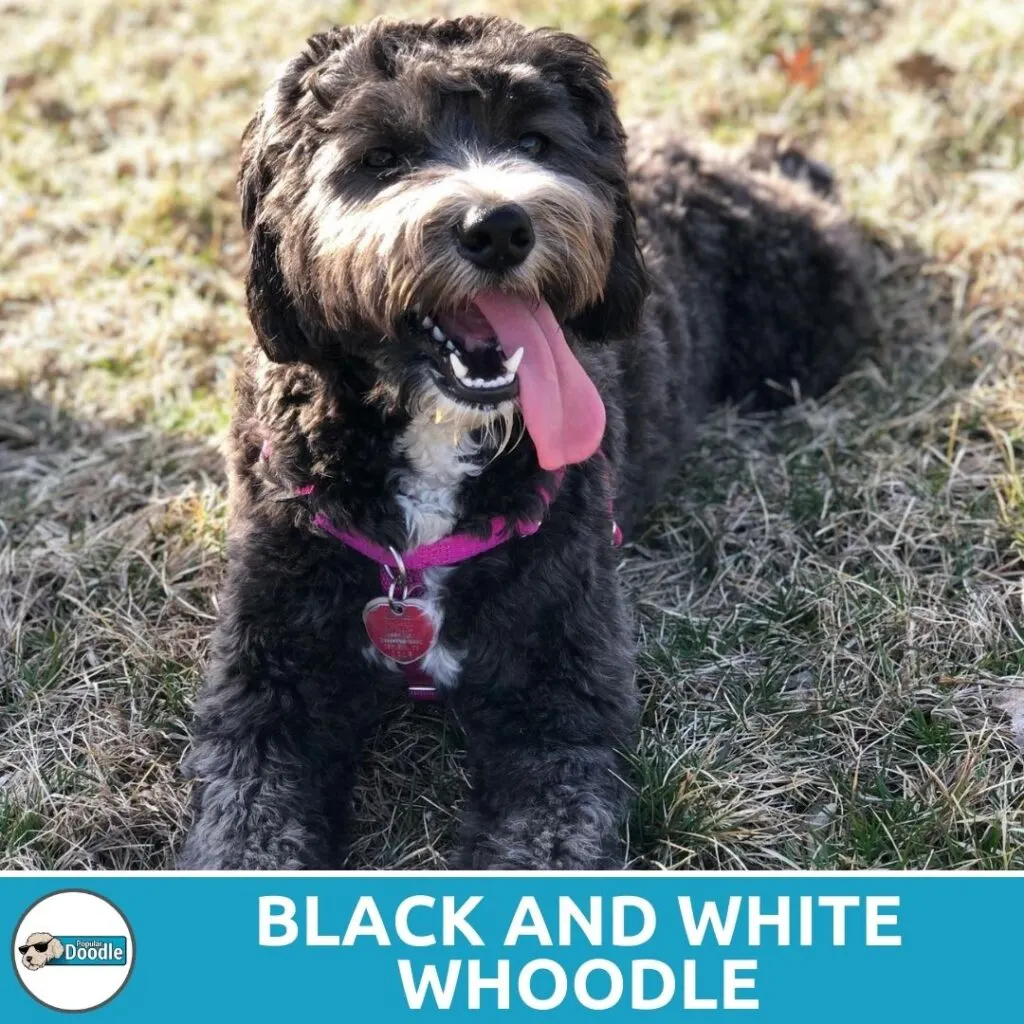
Final Thoughts on Whoodle Colors
When researching your future Whoodle, remember to prioritize health and temperament over appearances. You will adore your new Whoodle puppy regardless of its coat color, but it is heartbreaking to lose a beloved Whoodle due to preventable health conditions.
Whoodles are stunning dogs regardless of their coat color or pattern. Nonetheless, it is fun to fantasize about what your dream Whoodle will look like!




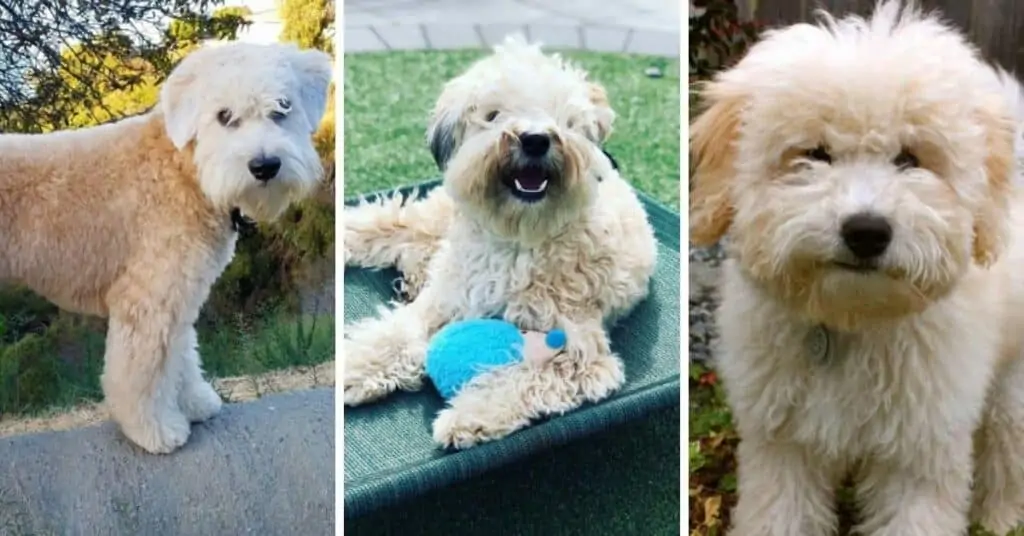
![What is a Phantom Goldendoodle? [Photo Gallery & FAQs] phantom goldendoodle](https://populardoodle.com/wp-content/uploads/2021/08/phantom-goldendoodle-1024x536.jpg.webp)
